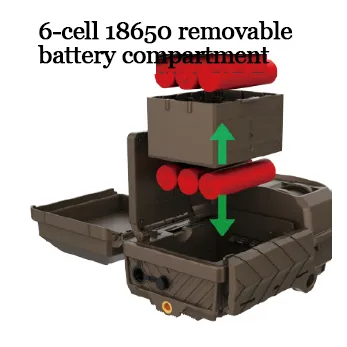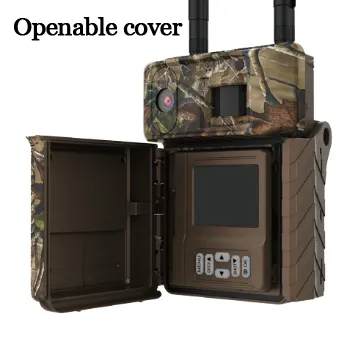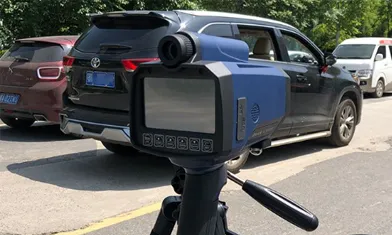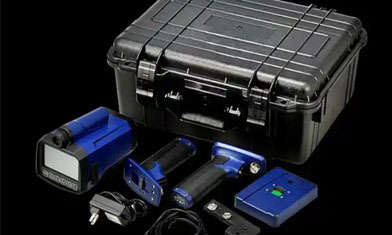What Application Scenarios Are Suitable For Infrared Monitoring Cameras With A Resolution Of 30 Million?
Infrared surveillance cameras with a resolution of 30 megapixels offer irreplaceable advantages in scenarios requiring stringent image accuracy, thanks to their ability to capture ultra-high detail. The following are typical application areas and specific scenarios:
1. Scientific Research and Ecological Monitoring: Capturing the Secrets of Life from a Microscopic Perspective
Species Behavioral Research
30 megapixels can clearly record subtle features such as animal fur texture and cub markings. For example, when monitoring snow leopards in nature reserves, cameras can identify the unique fur patterns of individual animals, helping to track population dynamics. Researchers can also use high-resolution images to analyze bird feather structure, insect compound eye morphology, and even document plant pollen transport pathways.
Long-Term Ecosystem Observation
These cameras are used to monitor vegetation succession and the impact of climate change on species distribution. For example, deploying cameras in highland meadows with 30 megapixels can capture the changes in the growth status of individual plants. Combined with time-lapse photography, they can generate time-lapse images of changes in vegetation cover. NASA's hyperspectral infrared cameras can even monitor Earth's fires and cloud structure from orbit with a resolution of 80 meters, demonstrating the value of high resolution in macroecological research. Molecular-Level Scientific Research Experiments
Although not direct infrared monitoring, high-resolution thermal imagers based on similar principles have been applied in materials science, such as capturing micron-level temperature distribution in chip circuits. Similarly, in the ecological field, 30-megapixel infrared cameras can be used to analyze the interaction between animal body temperature and the environment, such as the distribution of thermal radiation from the surface of bats during nighttime flight.
II. Industrial Inspection and Infrastructure Operation and Maintenance: A "Microscope" for Millimeter-Level Defects
Precision Rail Transit Inspection
The intelligent inspection device used by the Sichuan-Qinghai Railway is equipped with dual 30-megapixel cameras. It can detect defects such as loose contact bolts and worn conductors at the millimeter level in extremely cold environments, even at -30°C. This improves efficiency by 80% compared to traditional manual inspections. Similar technology can be extended to crack detection in metal structures such as power towers and bridge welds. Industrial Equipment Condition Monitoring
The FLIR G609 infrared camera, with its 640×480 resolution (approximately 300,000 pixels), detects furnace lining damage. A 30-megapixel camera can further identify even smaller refractory spalling or temperature anomalies, making it suitable for high-risk industries such as the chemical and petrochemical industries. Maideweishi's line scan cameras, with their 2K resolution and 40kHz line rate, capture hidden cracks in photovoltaic panels. The 30-megapixel area scan solution provides more comprehensive defect coverage.
Production Process Quality Control
In semiconductor wafer inspection, a 30-megapixel camera can identify scratches or contaminants smaller than 10 microns. In automotive manufacturing, it is used for analyzing weld penetration and quantifying the orange peel effect on paint surfaces. These applications require the integration of AI algorithms for automatic defect classification (such as the cloud-based AI species recognition feature of the Onika AM-38).

III. Security and Public Safety: From Macro-Control to Micro-Evidence Collection
Critical Infrastructure Protection
Airports, substations, and other locations can use 30-megapixel cameras to achieve a balance between wide-area coverage and detailed capture. For example, a single Honeywell 12MP fisheye camera can replace multiple traditional cameras, simultaneously monitoring perimeter intrusions and human behavior within a 15-meter infrared fill-light range. Combined with intelligent analysis, it can automatically identify behaviors such as fence climbing and unusual gatherings.
Traffic Environment Monitoring
A 30-megapixel infrared camera at highway toll booths or urban intersections can clearly capture license plate characters at night (requires 940nm red-blur-free fill-light) and simultaneously record vehicle models and cargo characteristics. In rainy and foggy weather, high resolution combined with wide dynamic range technology effectively enhances image recognition.
Criminal Investigation and Evidence Preservation
When collecting evidence for law enforcement, public security, procuratorial, and judicial systems, 30-megapixel cameras can preserve the original details of fingerprints, shoe prints, and other traces. For example, in cases of illegal hunting in the wild, cameras can not only record the suspect's appearance but also analyze the crime route through vegetation footprints.

IV. Special Environments and Extreme Conditions: Observation Beyond Physical Limits
Intelligent Operation and Maintenance of Plateau Railways
The inspection equipment used on the Sichuan-Qinghai Railway, at an altitude of 3,500 meters and in strong earthquake conditions, uses a 30-megapixel camera to achieve an accuracy of ±0.1mm in the diameter deviation of the contact wire, while also operating stably in temperatures as low as -40°C. Similar solutions can be applied to oil and gas pipeline inspections, mine slope monitoring, and other scenarios.

Polar and Deep-Sea Observation
At Antarctic research stations or deep-sea probes, 30-megapixel infrared cameras can record penguin colonies and deep-sea bioluminescence in extremely cold or high-pressure environments. The high resolution helps obtain sufficient analytical data (such as 3D modeling of ice crack expansion) with a limited number of captures.
Monitoring Complex Meteorological Conditions
The 30-megapixel infrared camera deployed at the weather station can be combined with temperature and humidity sensors to analyze the structure of the atmospheric boundary layer. For example, frost can be predicted by monitoring changes in plant leaf temperature, or cloud texture characteristics in a typhoon's eye can be identified.
V. Commercial and Civilian Uses: From Professional Tools to Consumer Applications
High-End Agriculture and Animal Husbandry
Large ranches use 30-megapixel cameras to monitor livestock health (such as coat gloss and gait abnormalities). Combined with infrared thermal imaging technology, these cameras can detect diseases like mastitis early. In smart agriculture, they are used to accurately identify the distribution of lesions on crop leaves affected by pests and diseases.
Home Security and Pet Monitoring
30-megapixel infrared cameras deployed in villa courtyards can clearly record pet activity and details of intrusions at night. Some models support facial recognition (such as the app-linked feature on the Omika AM-999 Wi-Fi version), enabling automatic differentiation between family members and outsiders.
Extreme Sports and Outdoor Adventures
Mountaineering and diving teams use portable 30-megapixel cameras to record route topography, such as glacial crevasses and details of cave murals. The high-resolution images can be used to create 3D maps or provide precise reference for rescue operations. Technical Adaptation and Scene Optimization Recommendations
Storage and Transmission: A single 30-megapixel photo consumes approximately 10-30MB, while a 4K video consumes 10-15GB per hour. It is recommended to use a TF card of 256GB or larger (such as the Onika AM-38, which supports cloud storage) and enable real-time data transmission via 4G/Wi-Fi.
For Nighttime Imaging: Prefer 940nm redburst-free infrared illuminators (such as the AM-38) and large-size CMOS sensors (such as 1/1.7-inch) to reduce low-light noise and ensure a signal-to-noise ratio (SNR) of >38dB for nighttime images.
Algorithm Enhancement: Incorporating AI models (such as species identification and defect classification) maximizes data value. For example, Onika's cloud platform system can automatically label plant and animal species in photos and generate ecological reports.
The value of a 30-megapixel infrared surveillance camera lies not only in its pixel count but also in its precise matching to scene requirements. Whether it's tracking snow leopard tracks, inspecting high-speed rail contact network bolts, or analyzing semiconductor wafer defects, these devices are redefining the accuracy of human observation of the physical world through a "pixel revolution."





















